Special Report
See How Russia and Ukraine Military Spending Compares to the World

Published:
Last Updated:

Russia’s invasion of Ukraine may well mark the largest shift in the balance of power in Europe since the end of the Cold War – and may also prove to be the largest military conflict on the continent since World War II. The invasion, which has been described as a full-scale attack, comes after four consecutive years of rising military spending worldwide.
A large share of military spending typically goes towards weapons development and improving defensive capabilities, which, along with strategic international alliances, are meant to deter acts of aggression. NATO, a military alliance that includes the U.S. and 29 other countries, was formed after World War II, specifically to check potential aggression from the Soviet Union. NATO members are expected to spend at least 2% of their GDP on defense.
Notably, Ukraine is both a former Soviet republic and an aspiring NATO member. Though Russian military spending topped $61.7 billion in 2020, eclipsing Ukraine’s expenditure of $5.9 billion, it is a small fraction of U.S. military spending, which, at over $778 billion in 2020, is far and away the largest in the world.
Using data from the Stockholm International Peace Research Institute, compiled by the World Bank, 24/7 Wall St. identified the countries spending the most on war. Countries are ranked by their 2020 military expenditure in current U.S. dollars.
We also reviewed data on spending as a share of GDP, which, among the countries on this list, ranges from 0.6% to 10.9%. Total armed services personnel in the countries on this list range from 15,000 up to 3 million. Here is a look at the companies profiting the most from war.
In each of these measures, Ukraine is outmatched by Russia. Ukraine spends the equivalent of 4.1% of its GDP on its military, compared to Russia’s 4.3% expenditure, and its military personnel total just 311,000, compared to 1.5 million in Russia.
Click here to see how Russia and Ukraine military spending compares to the world.
Click here to read our detailed methodology.
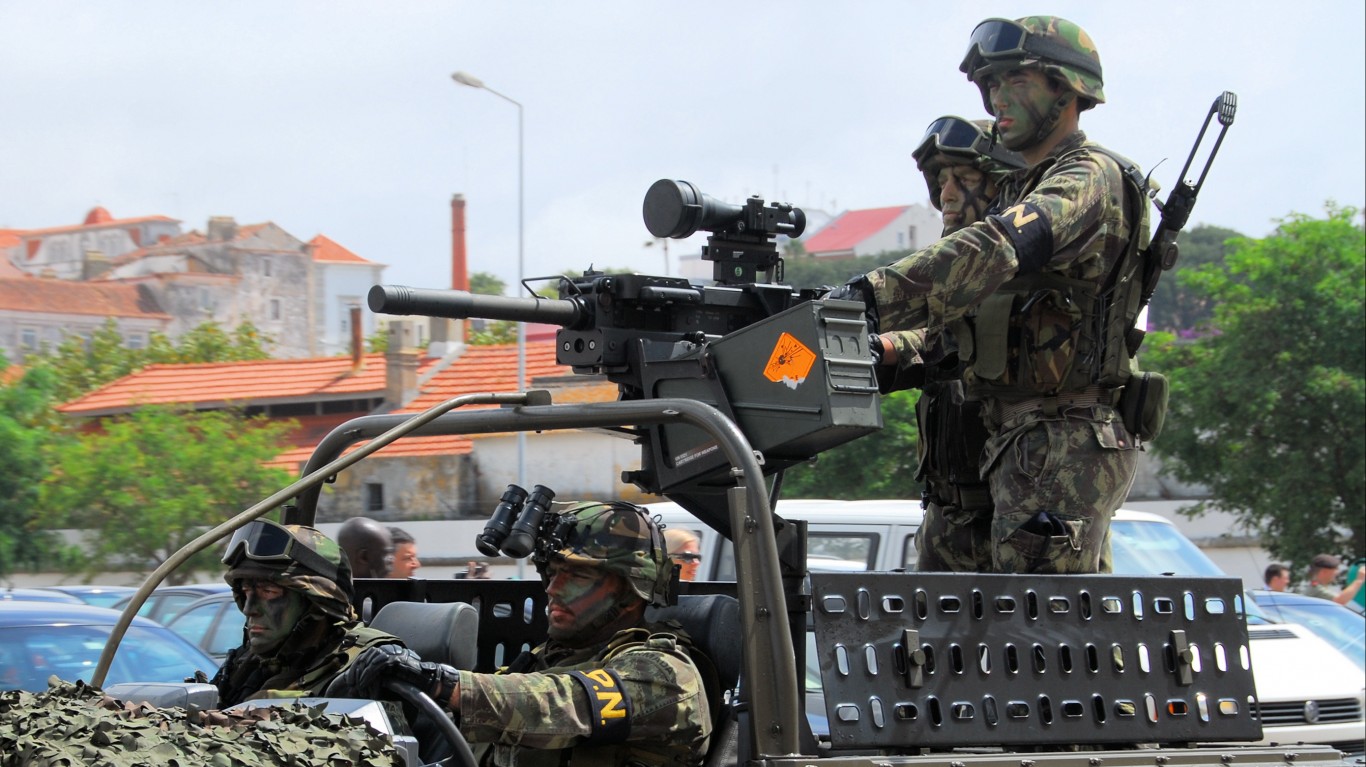
40. Portugal
> Military spending, 2020: $4.6 billion (2.1% of GDP)
> Military and paramilitary personnel: 52,000 (1.0% of labor force)
>Total population: 10,305,564
[in-text-ad]
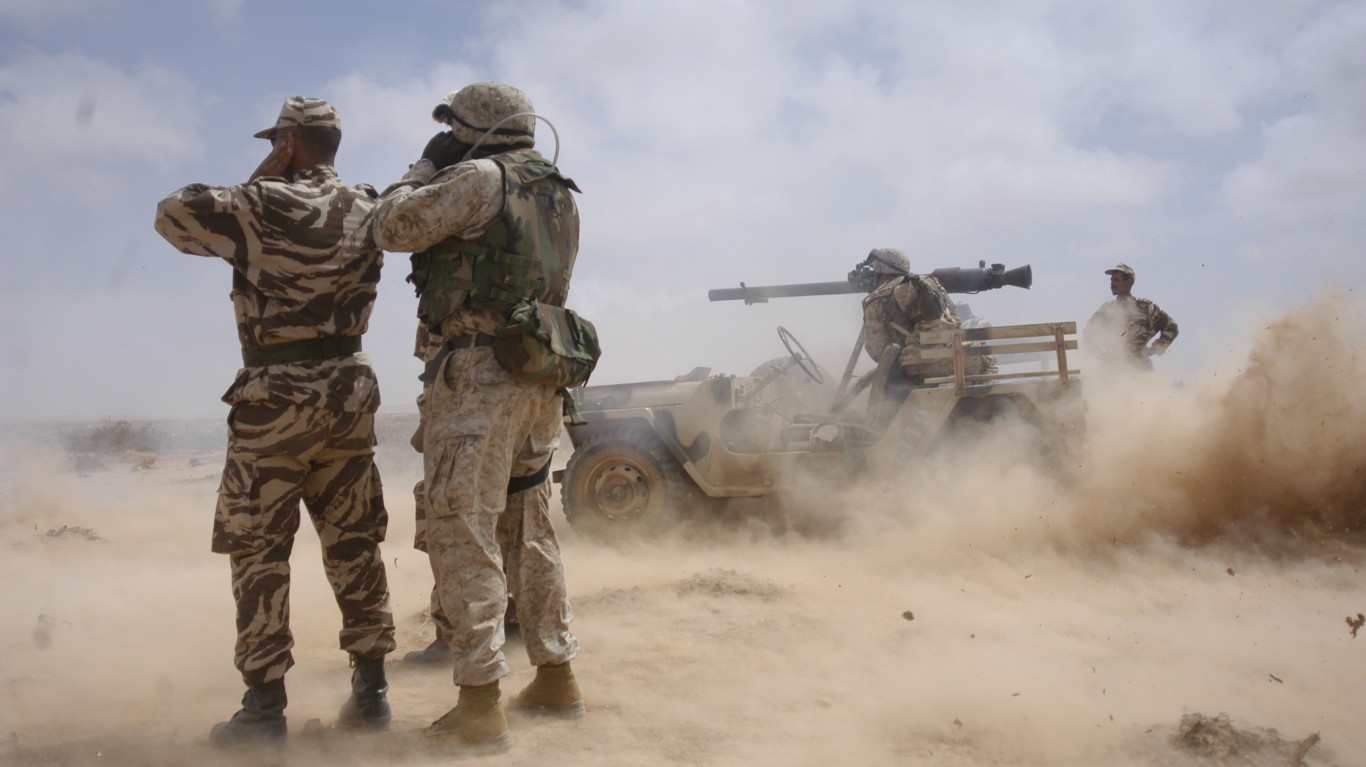
39. Morocco
> Military spending, 2020: $4.8 billion (4.3% of GDP)
> Military and paramilitary personnel: 246,000 (2.0% of labor force)
>Total population: 36,910,558

38. Denmark
> Military spending, 2020: $5.0 billion (1.4% of GDP)
> Military and paramilitary personnel: 15,000 (0.5% of labor force)
>Total population: 5,831,404
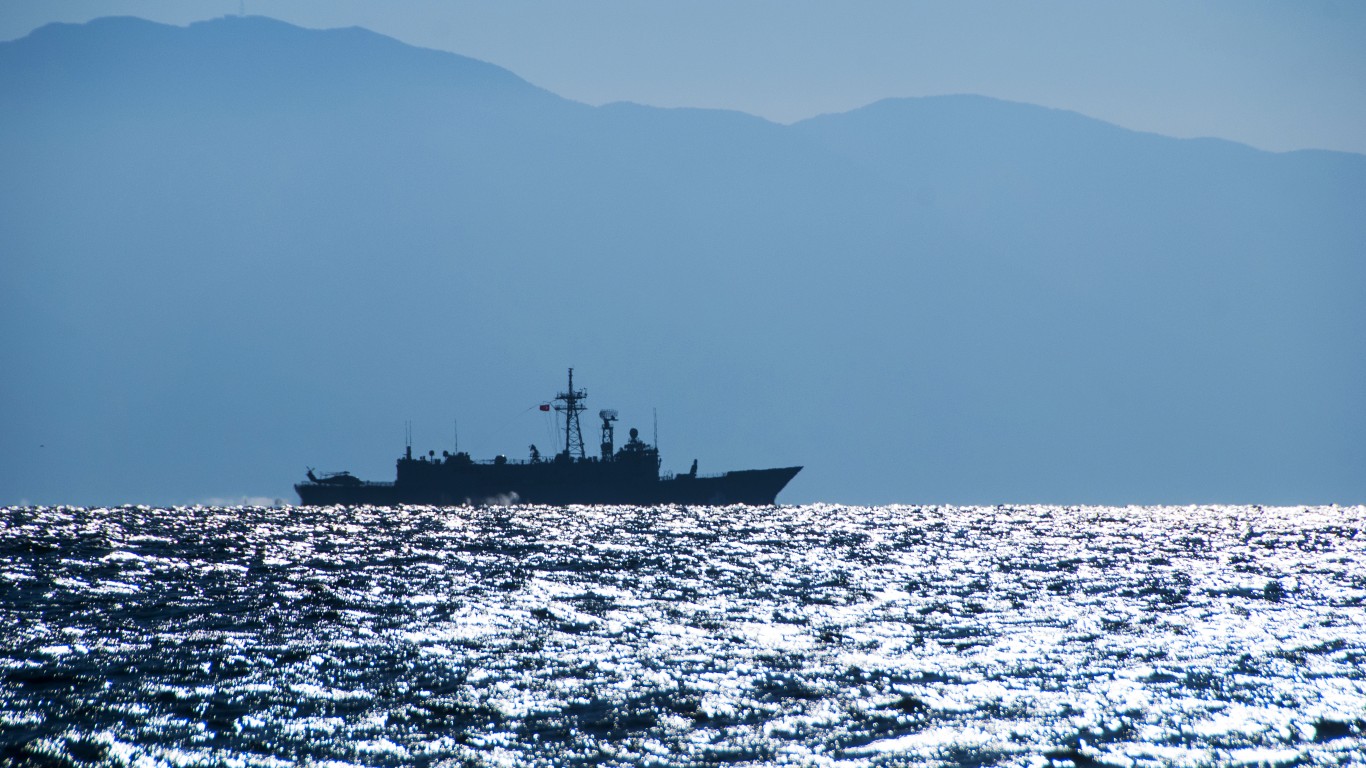
37. Greece
> Military spending, 2020: $5.3 billion (2.8% of GDP)
> Military and paramilitary personnel: 147,000 (3.1% of labor force)
>Total population: 10,715,549
[in-text-ad-2]

36. Belgium
> Military spending, 2020: $5.5 billion (1.1% of GDP)
> Military and paramilitary personnel: 26,000 (0.5% of labor force)
>Total population: 11,555,997

35. Switzerland
> Military spending, 2020: $5.7 billion (0.8% of GDP)
> Military and paramilitary personnel: 20,000 (0.4% of labor force)
>Total population: 8,636,896
[in-text-ad]

34. Romania
> Military spending, 2020: $5.7 billion (2.3% of GDP)
> Military and paramilitary personnel: 126,000 (1.4% of labor force)
>Total population: 19,286,123

33. Ukraine
> Military spending, 2020: $5.9 billion (4.1% of GDP)
> Military and paramilitary personnel: 311,000 (1.5% of labor force)
>Total population: 44,134,693
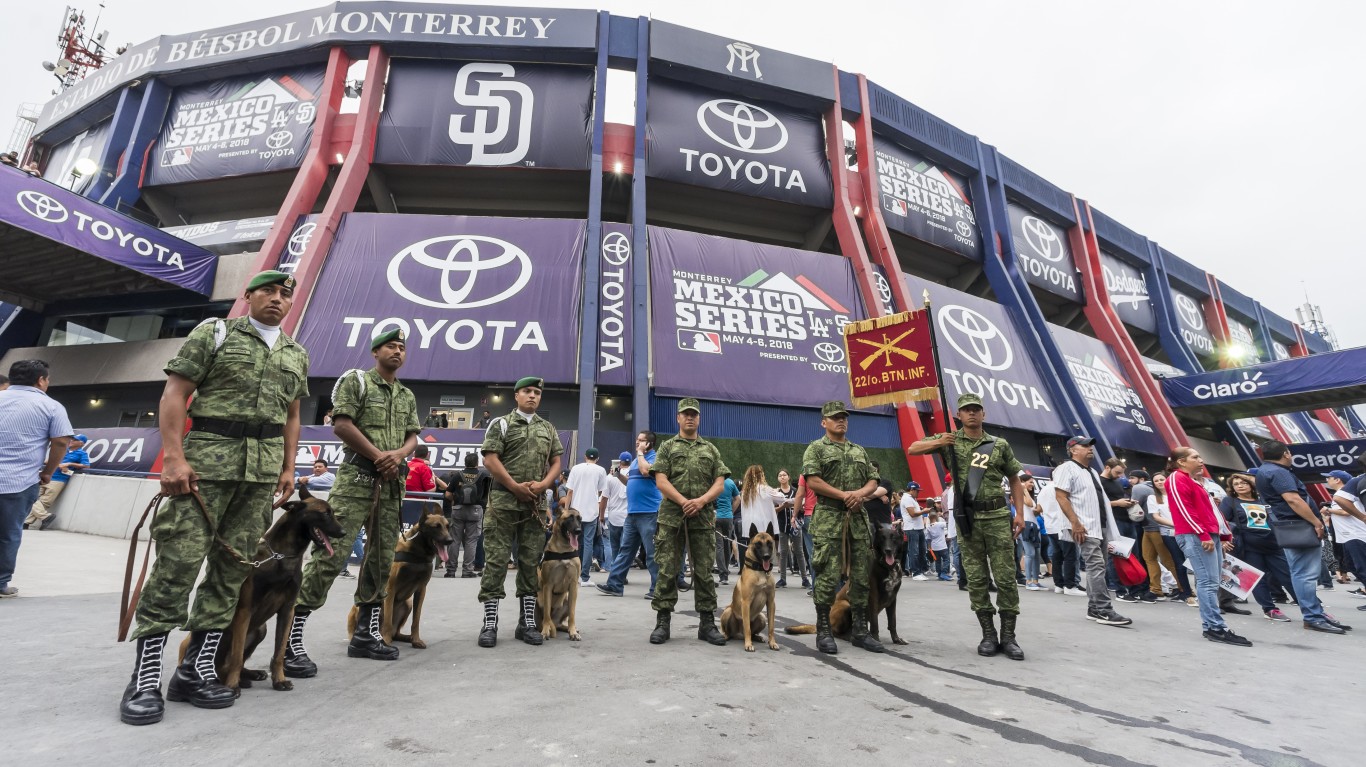
32. Mexico
> Military spending, 2020: $6.1 billion (0.6% of GDP)
> Military and paramilitary personnel: 328,000 (0.6% of labor force)
>Total population: 128,932,753
[in-text-ad-2]
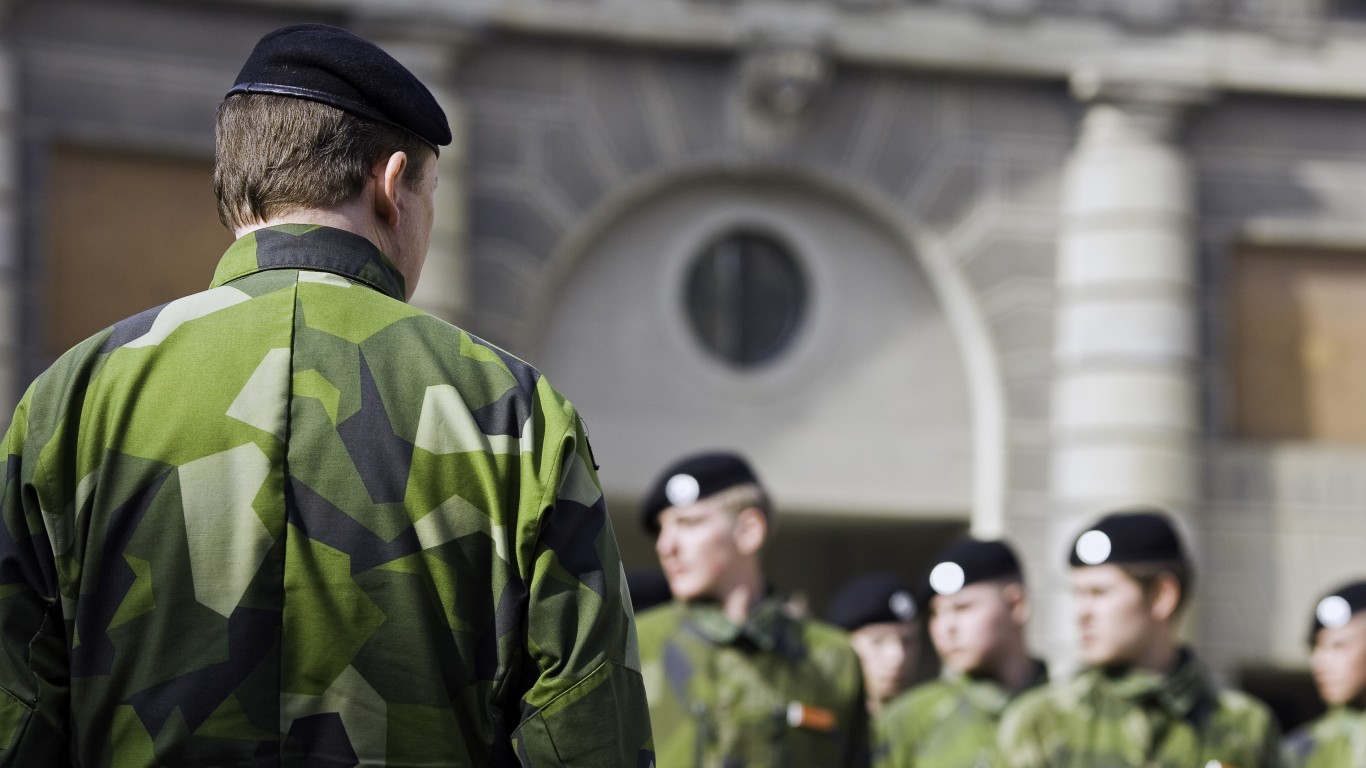
31. Sweden
> Military spending, 2020: $6.5 billion (1.2% of GDP)
> Military and paramilitary personnel: 15,000 (0.3% of labor force)
>Total population: 10,353,442

30. Oman
> Military spending, 2020: $6.7 billion (10.9% of GDP)
> Military and paramilitary personnel: 47,000 (1.7% of labor force)
>Total population: 5,106,622
[in-text-ad]
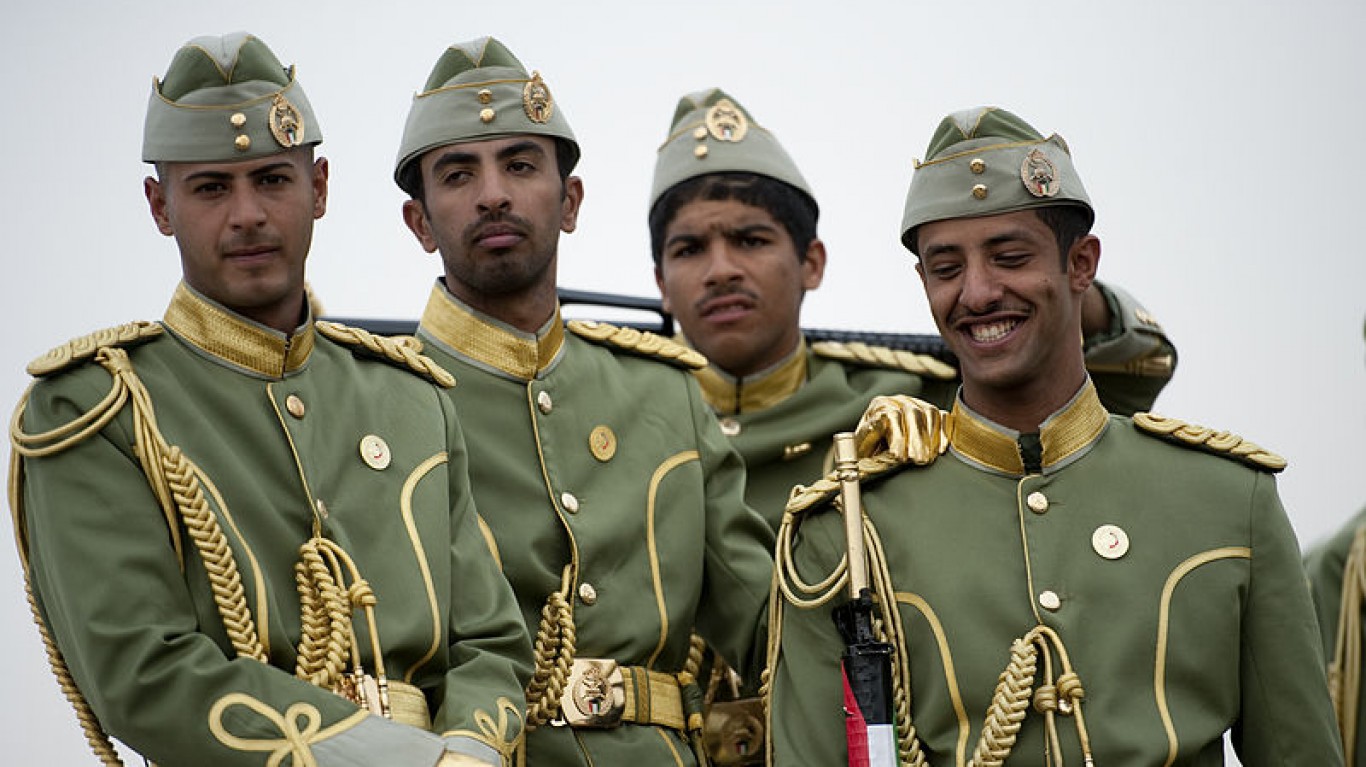
29. Kuwait
> Military spending, 2020: $6.9 billion (6.5% of GDP)
> Military and paramilitary personnel: 25,000 (1.0% of labor force)
>Total population: 4,270,563
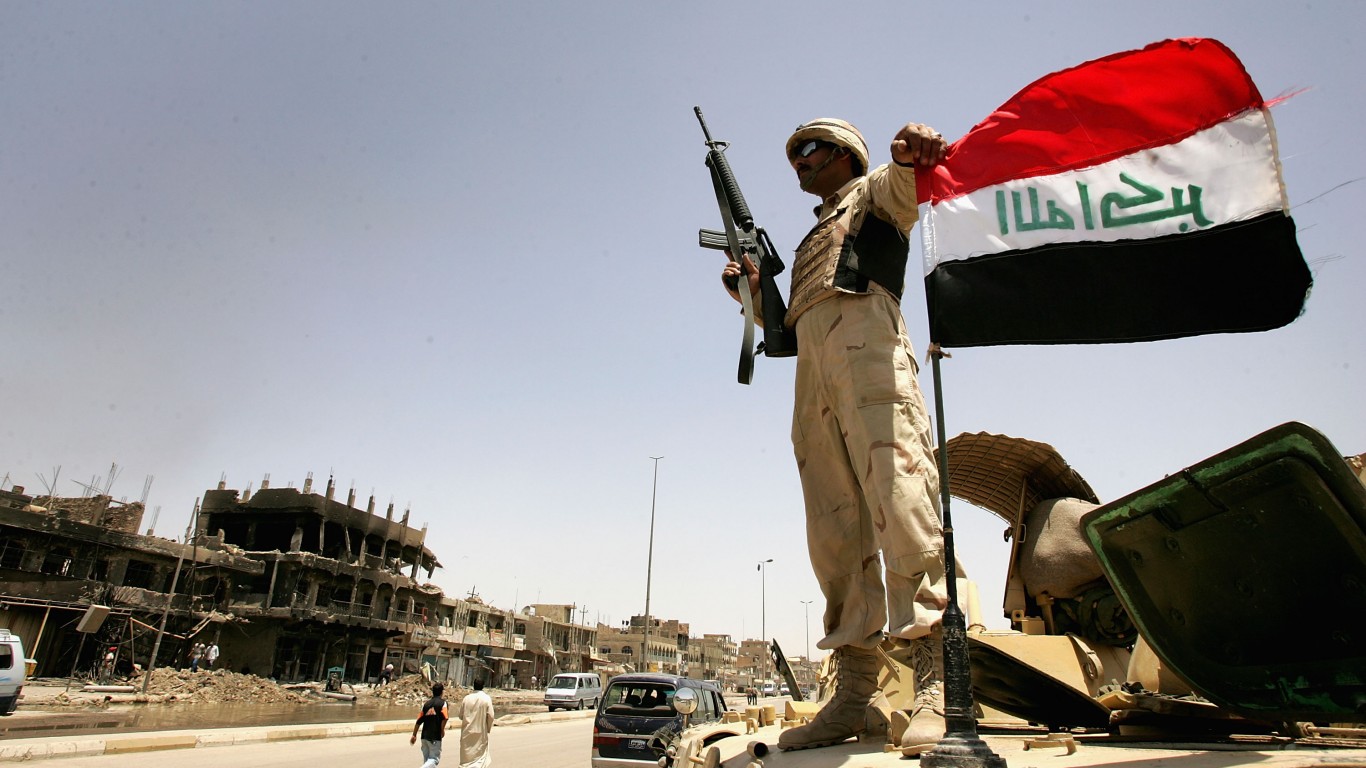
28. Iraq
> Military spending, 2020: $7.0 billion (4.1% of GDP)
> Military and paramilitary personnel: 341,000 (3.3% of labor force)
>Total population: 40,222,503

27. Norway
> Military spending, 2020: $7.1 billion (1.9% of GDP)
> Military and paramilitary personnel: 23,000 (0.8% of labor force)
>Total population: 5,379,475
[in-text-ad-2]
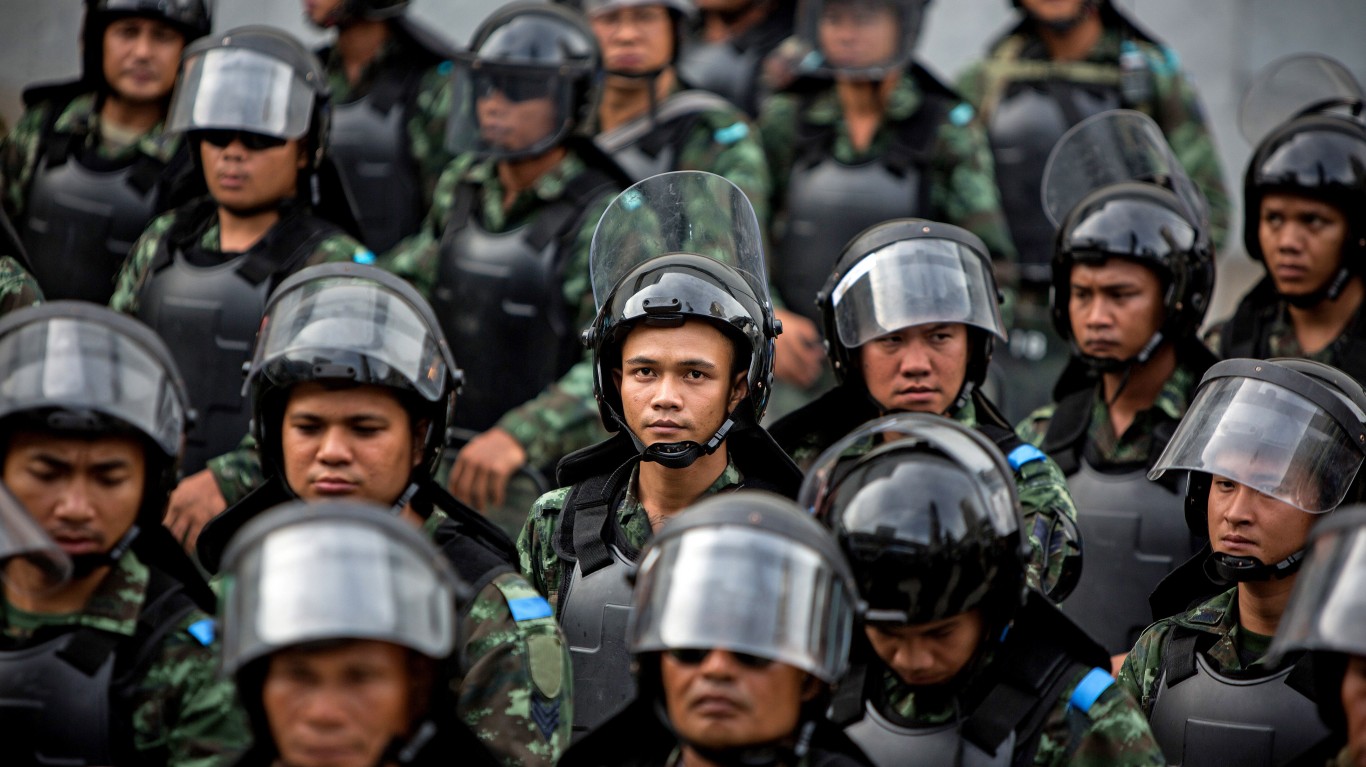
26. Thailand
> Military spending, 2020: $7.3 billion (1.5% of GDP)
> Military and paramilitary personnel: 455,000 (1.2% of labor force)
>Total population: 69,799,978

25. Colombia
> Military spending, 2020: $9.2 billion (3.4% of GDP)
> Military and paramilitary personnel: 481,000 (1.8% of labor force)
>Total population: 50,882,884
[in-text-ad]

24. Indonesia
> Military spending, 2020: $9.4 billion (0.9% of GDP)
> Military and paramilitary personnel: 676,000 (0.5% of labor force)
>Total population: 273,523,621
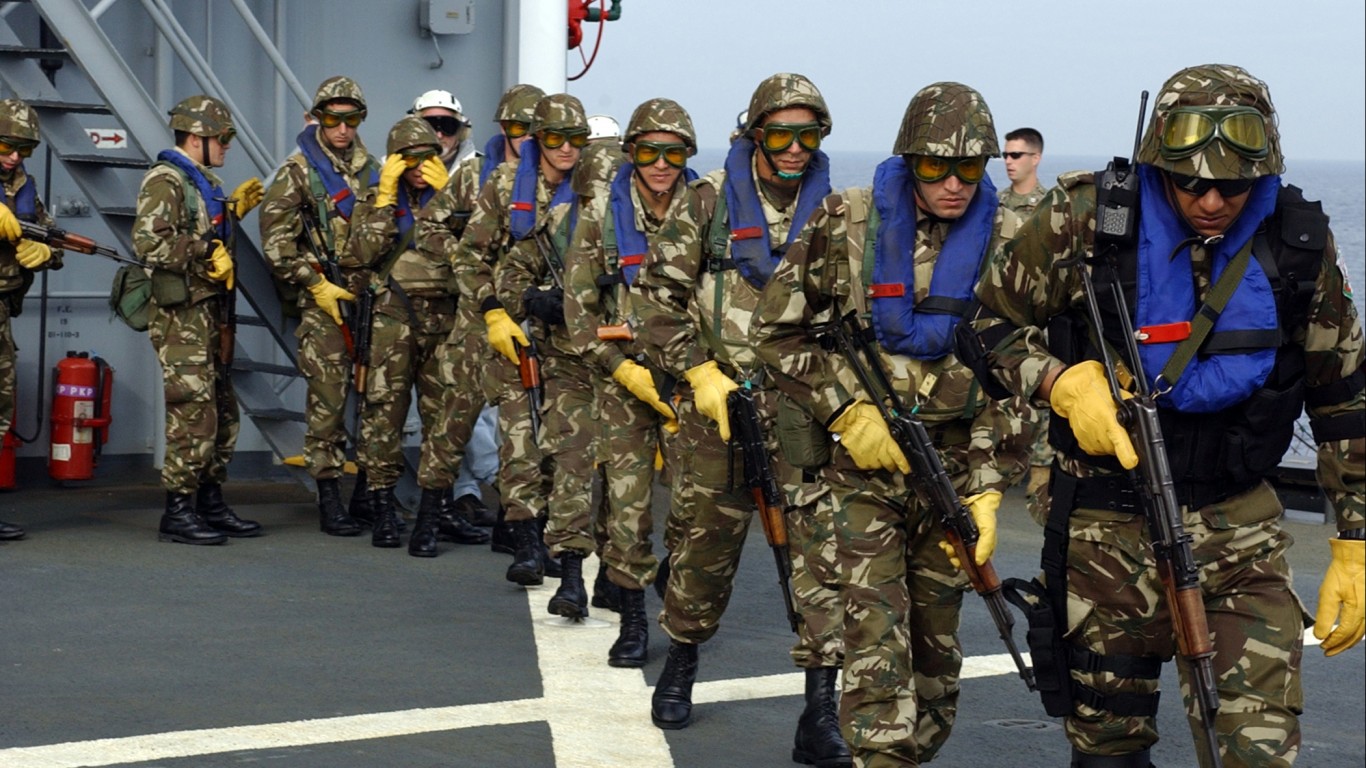
23. Algeria
> Military spending, 2020: $9.7 billion (6.7% of GDP)
> Military and paramilitary personnel: 317,000 (2.5% of labor force)
>Total population: 43,851,043
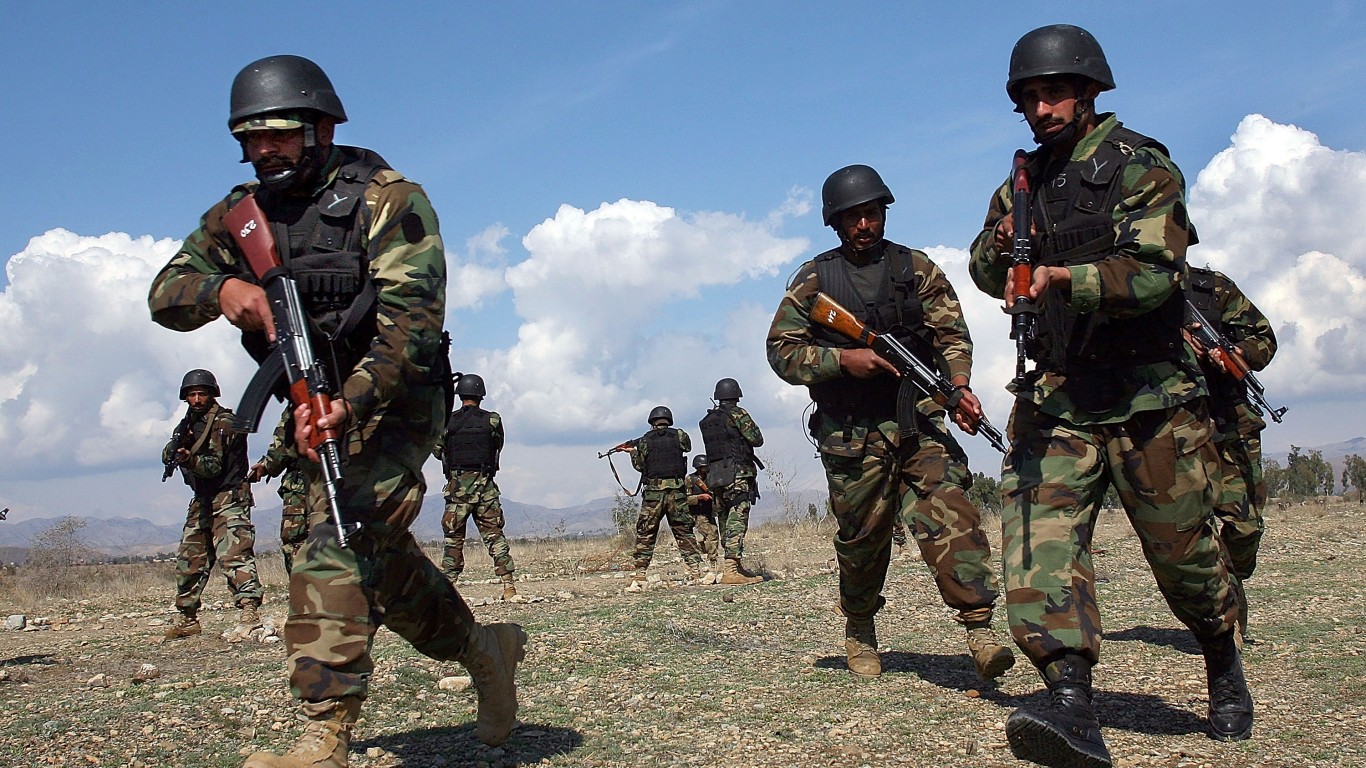
22. Pakistan
> Military spending, 2020: $10.4 billion (4.0% of GDP)
> Military and paramilitary personnel: 943,000 (1.3% of labor force)
>Total population: 220,892,331
[in-text-ad-2]

21. Singapore
> Military spending, 2020: $10.9 billion (3.2% of GDP)
> Military and paramilitary personnel: 59,000 (1.7% of labor force)
>Total population: 5,685,807
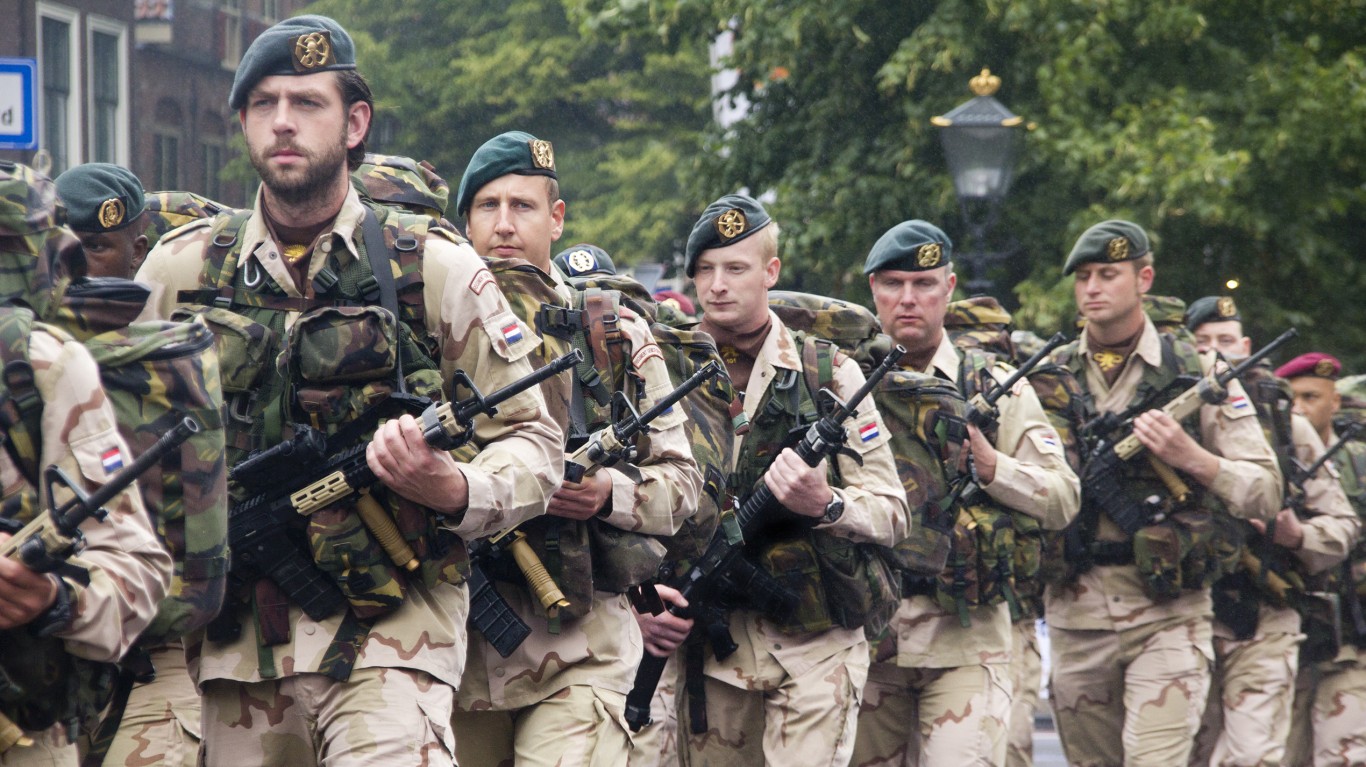
20. Netherlands
> Military spending, 2020: $12.6 billion (1.4% of GDP)
> Military and paramilitary personnel: 41,000 (0.4% of labor force)
>Total population: 17,441,139
[in-text-ad]
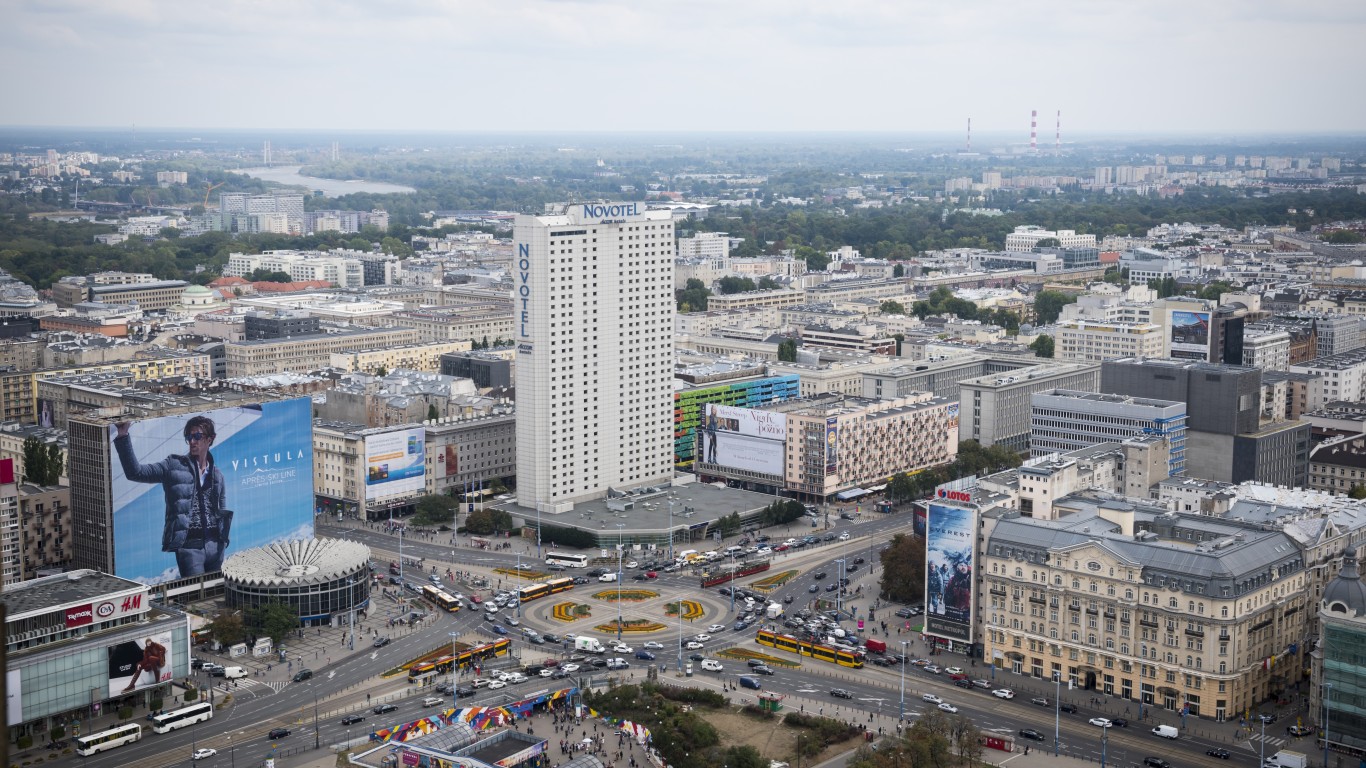
19. Poland
> Military spending, 2020: $13.0 billion (2.2% of GDP)
> Military and paramilitary personnel: 189,000 (1.0% of labor force)
>Total population: 37,950,802

18. Iran
> Military spending, 2020: $15.8 billion (2.2% of GDP)
> Military and paramilitary personnel: 650,000 (2.4% of labor force)
>Total population: 83,992,953

17. Spain
> Military spending, 2020: $17.4 billion (1.4% of GDP)
> Military and paramilitary personnel: 199,000 (0.9% of labor force)
>Total population: 47,351,567
[in-text-ad-2]
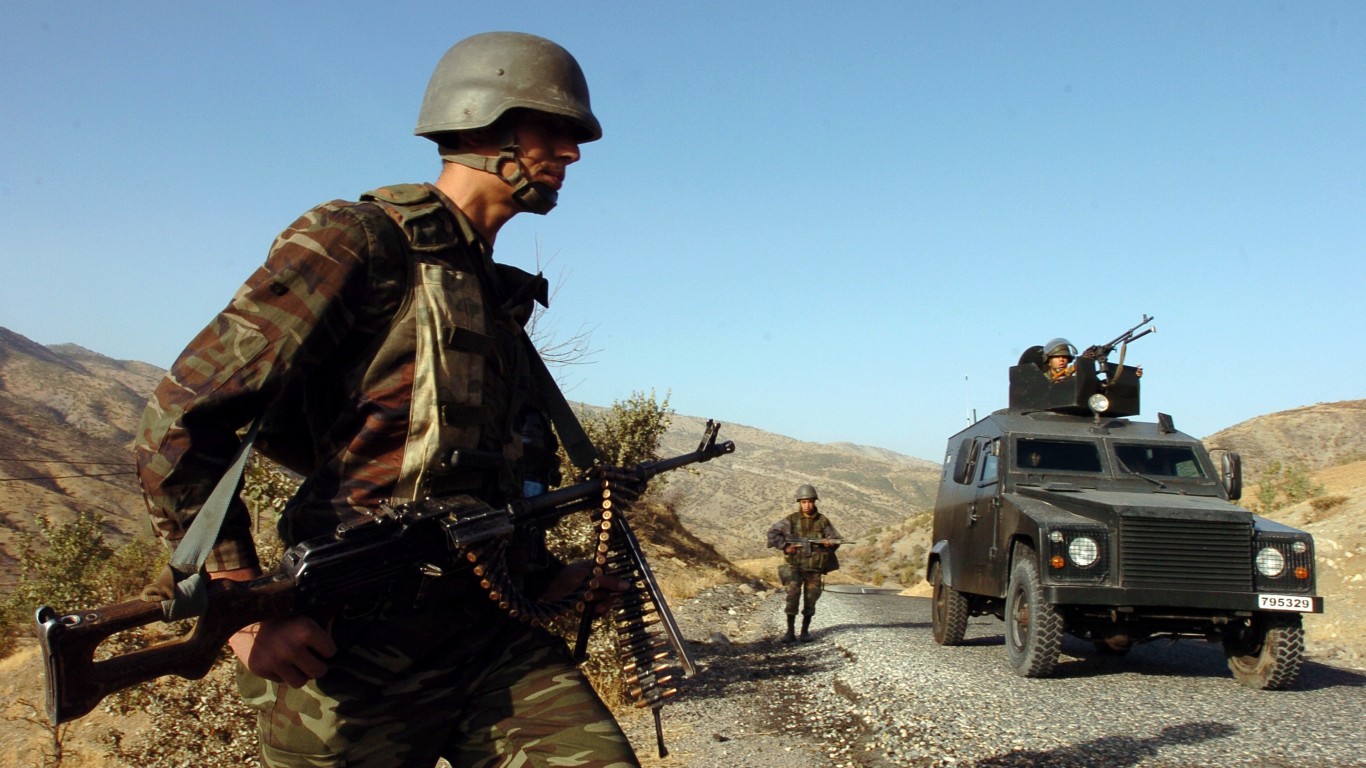
16. Turkey
> Military spending, 2020: $17.7 billion (2.8% of GDP)
> Military and paramilitary personnel: 512,000 (1.5% of labor force)
>Total population: 84,339,067
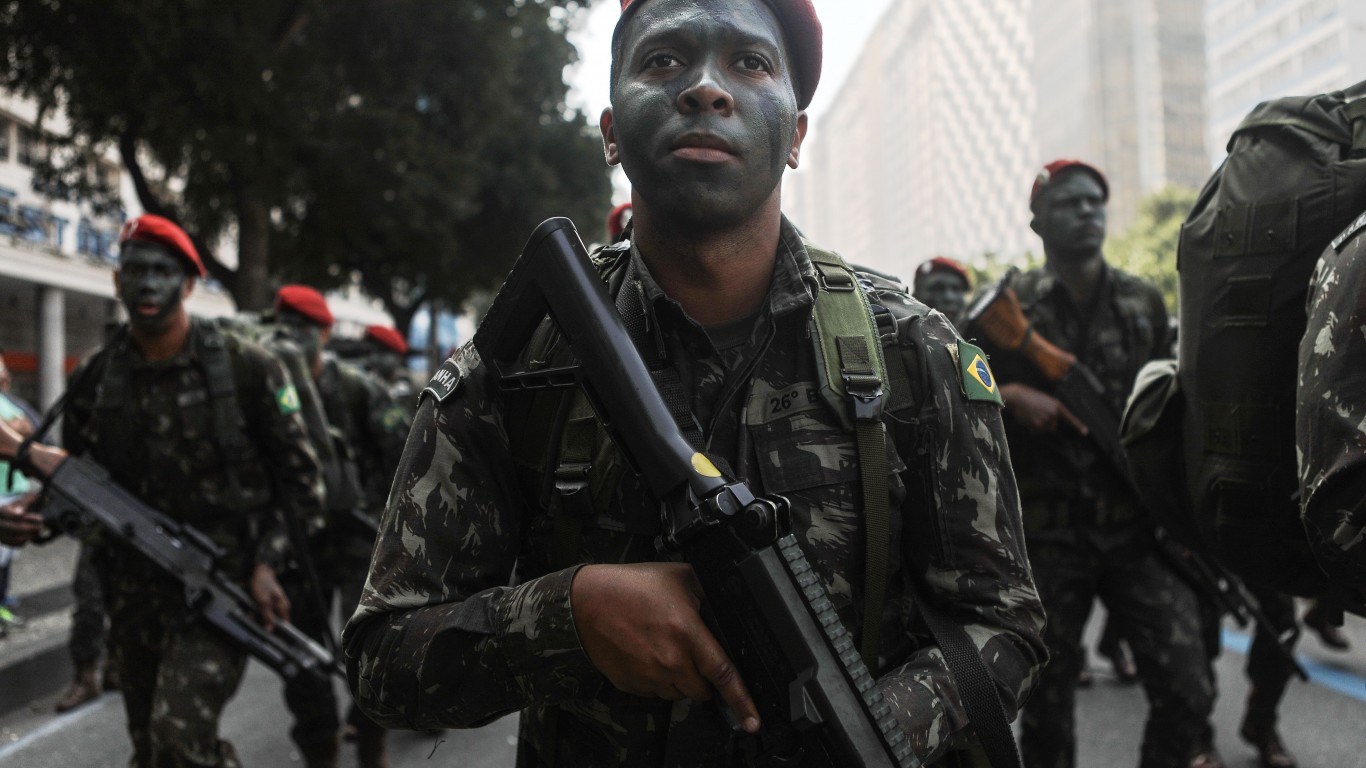
15. Brazil
> Military spending, 2020: $19.7 billion (1.4% of GDP)
> Military and paramilitary personnel: 762,000 (0.7% of labor force)
>Total population: 212,559,409
[in-text-ad]
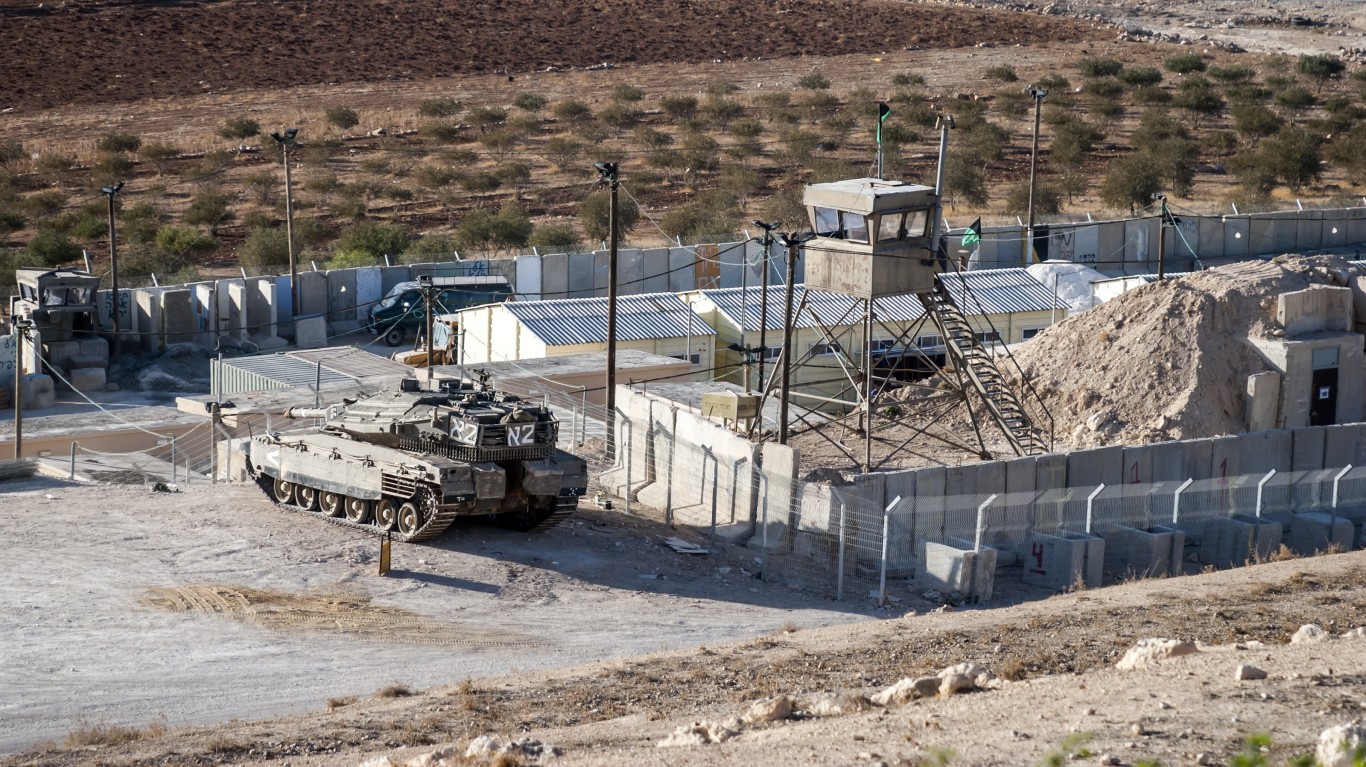
14. Israel
> Military spending, 2020: $21.7 billion (5.6% of GDP)
> Military and paramilitary personnel: 178,000 (4.3% of labor force)
>Total population: 9,216,900

13. Canada
> Military spending, 2020: $22.8 billion (1.4% of GDP)
> Military and paramilitary personnel: 72,000 (0.3% of labor force)
>Total population: 38,005,238

12. Australia
> Military spending, 2020: $27.5 billion (2.1% of GDP)
> Military and paramilitary personnel: 59,000 (0.4% of labor force)
>Total population: 25,687,041
[in-text-ad-2]

11. Italy
> Military spending, 2020: $28.9 billion (1.6% of GDP)
> Military and paramilitary personnel: 342,000 (1.3% of labor force)
>Total population: 59,554,023
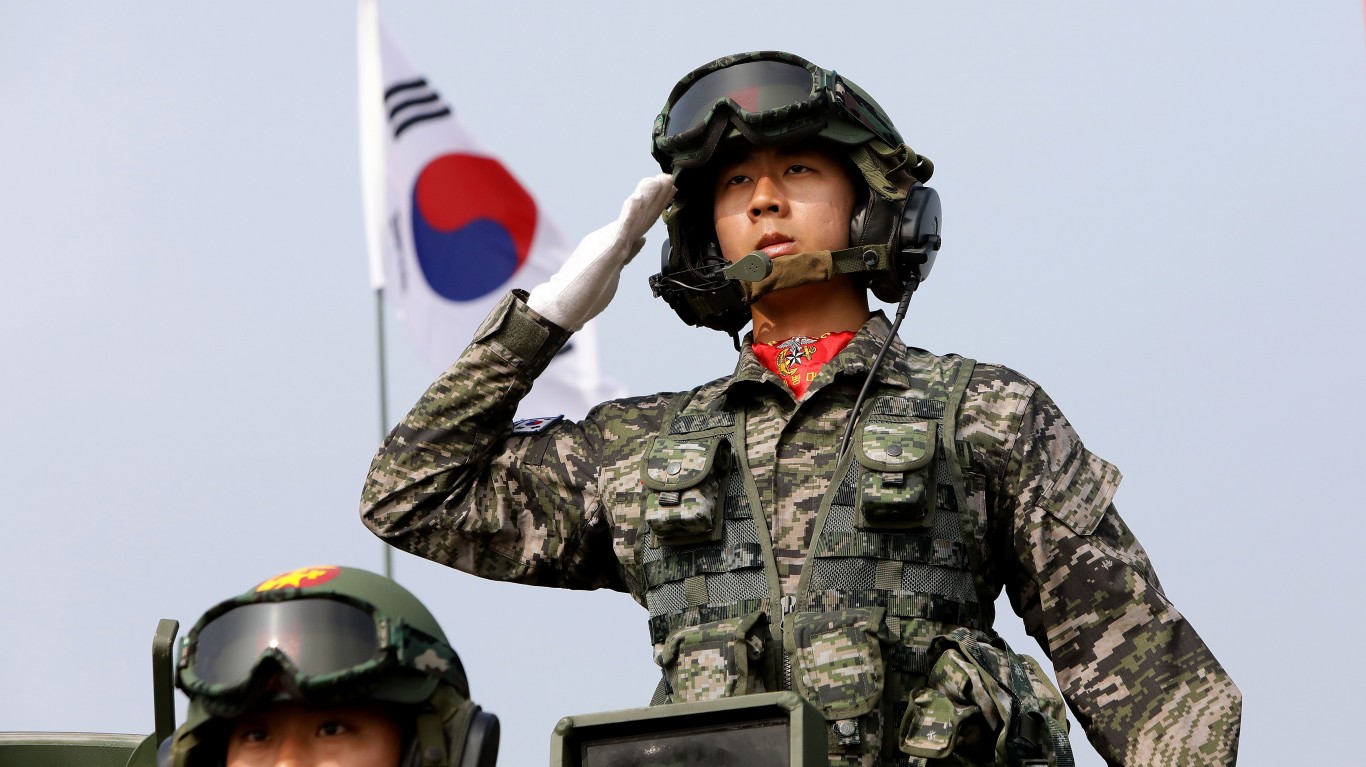
10. South Korea
> Military spending, 2020: $45.7 billion (2.8% of GDP)
> Military and paramilitary personnel: 613,000 (2.1% of labor force)
>Total population: 51,780,579
[in-text-ad]

9. Japan
> Military spending, 2020: $49.1 billion (1.0% of GDP)
> Military and paramilitary personnel: 261,000 (0.4% of labor force)
>Total population: 125,836,021
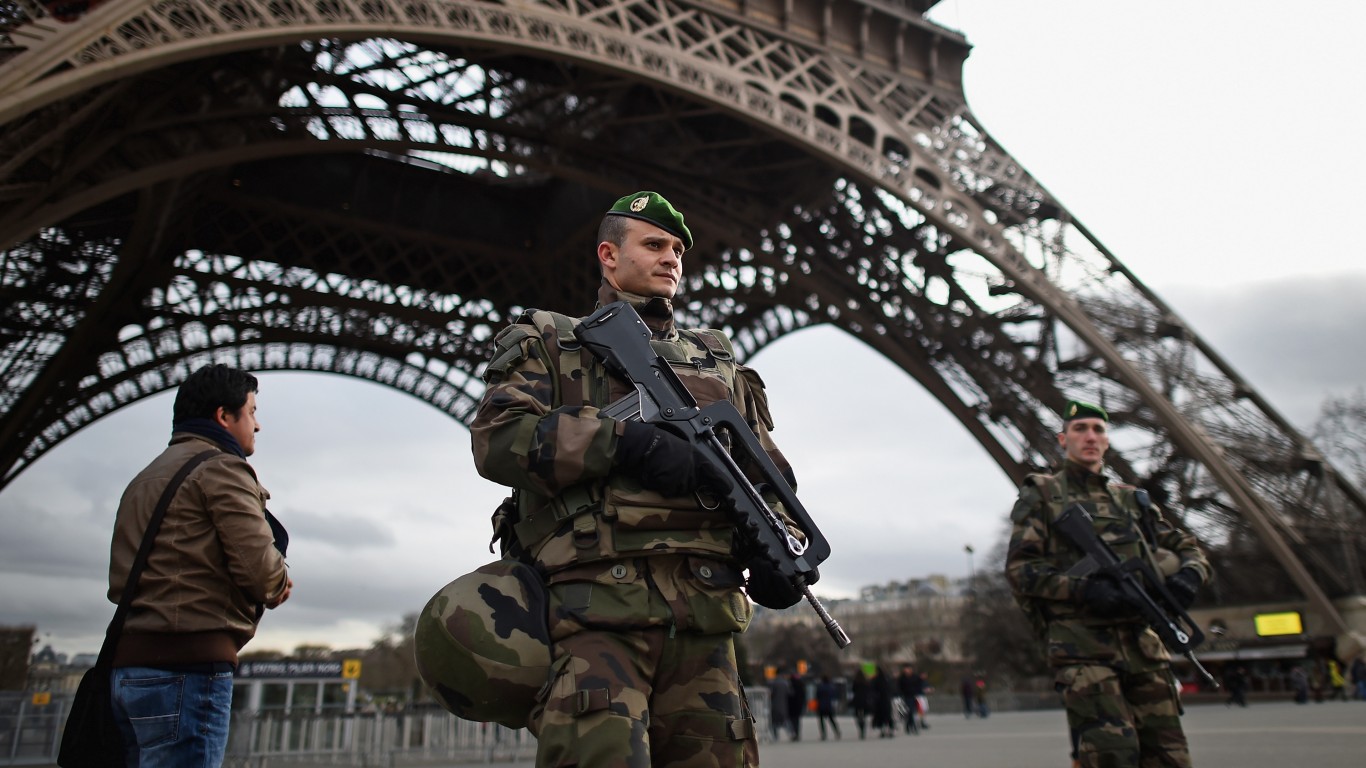
8. France
> Military spending, 2020: $52.7 billion (2.1% of GDP)
> Military and paramilitary personnel: 304,000 (1.0% of labor force)
>Total population: 67,391,582

7. Germany
> Military spending, 2020: $52.8 billion (1.4% of GDP)
> Military and paramilitary personnel: 184,000 (0.4% of labor force)
>Total population: 83,240,525
[in-text-ad-2]

6. Saudi Arabia
> Military spending, 2020: $57.5 billion (8.4% of GDP)
> Military and paramilitary personnel: 252,000 (1.7% of labor force)
>Total population: 34,813,867
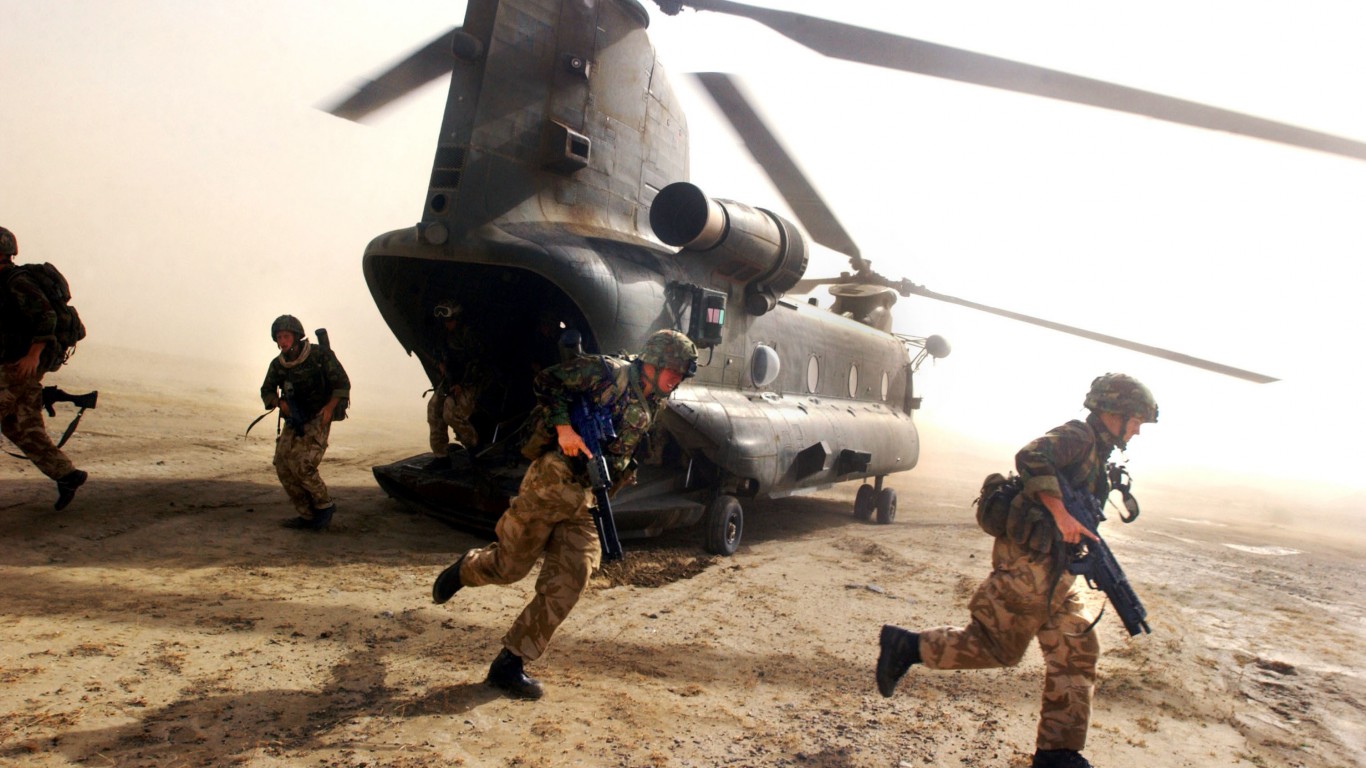
5. United Kingdom
> Military spending, 2020: $59.2 billion (2.2% of GDP)
> Military and paramilitary personnel: 149,000 (0.4% of labor force)
>Total population: 67,215,293
[in-text-ad]
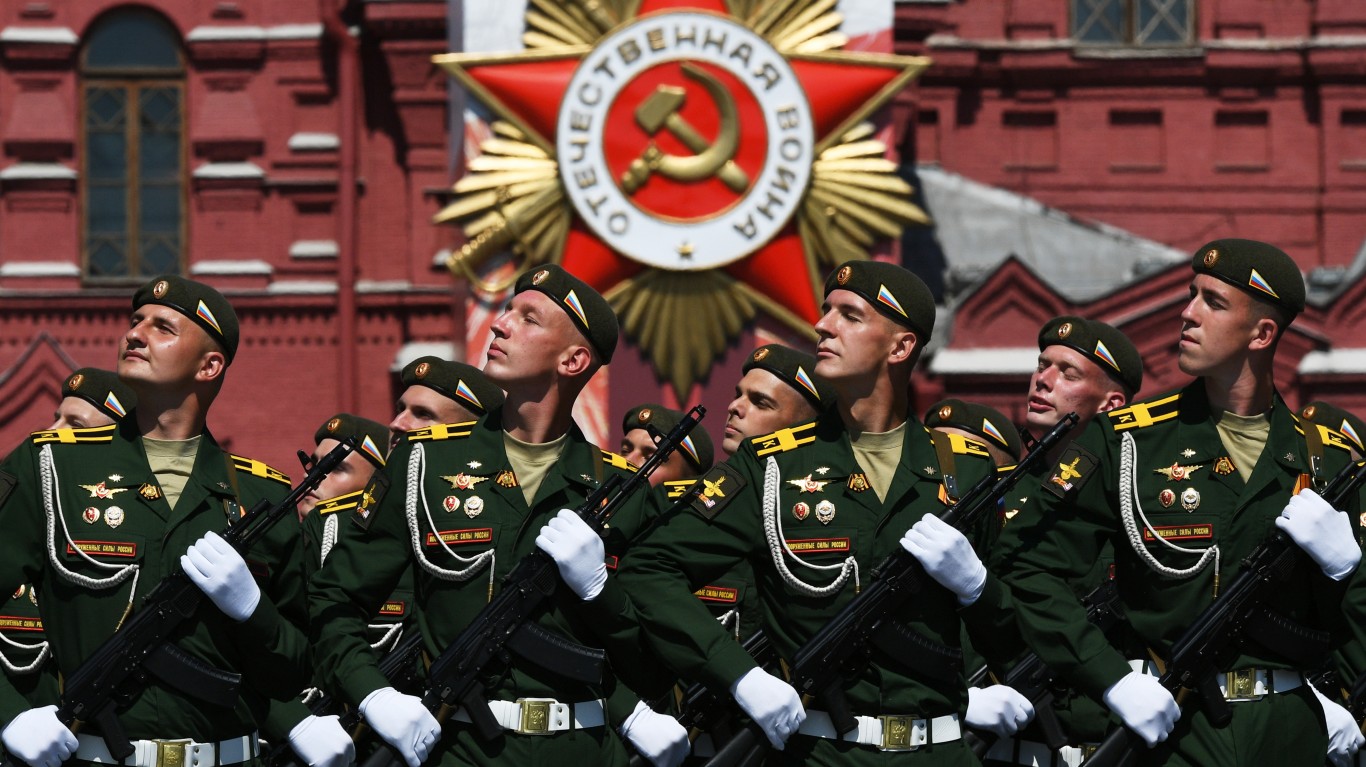
4. Russian Federation
> Military spending, 2020: $61.7 billion (4.3% of GDP)
> Military and paramilitary personnel: 1,454,000 (2.0% of labor force)
>Total population: 144,104,080

3. India
> Military spending, 2020: $72.9 billion (2.9% of GDP)
> Military and paramilitary personnel: 3,045,000 (0.6% of labor force)
>Total population: 1,380,004,385

2. China
> Military spending, 2020: $252.3 billion (1.7% of GDP)
> Military and paramilitary personnel: 2,535,000 (0.3% of labor force)
>Total population: 1,410,929,362
[in-text-ad-2]

1. United States
> Military spending, 2020: $778.2 billion (3.7% of GDP)
> Military and paramilitary personnel: 1,388,000 (0.8% of labor force)
>Total population: 329,484,123
Methodology
To determine the countries spending the most on war, 24/7 Wall St. reviewed military expenditure in current U.S. dollars in 2020 from the Stockholm International Peace Research Institute, compiled by the World Bank. Military expenditure covers the expenditures on current military forces and activities, including salaries and benefits, operational expenses, arms and equipment purchases, military construction, research and development, central administration, command, and support.
Supplemental data on military expenditure as a percentage of GDP also came from SIPRI. We also reviewed World Bank data on military personnel from 2019, the most recent year of available data. Personnel counts include active-duty military personnel as well as paramilitary personnel. Population data for 2020 came from the World Bank.
Retirement can be daunting, but it doesn’t need to be.
Imagine having an expert in your corner to help you with your financial goals. Someone to help you determine if you’re ahead, behind, or right on track. With SmartAsset, that’s not just a dream—it’s reality. This free tool connects you with pre-screened financial advisors who work in your best interests. It’s quick, it’s easy, so take the leap today and start planning smarter!
Don’t waste another minute; get started right here and help your retirement dreams become a retirement reality.
Thank you for reading! Have some feedback for us?
Contact the 24/7 Wall St. editorial team.